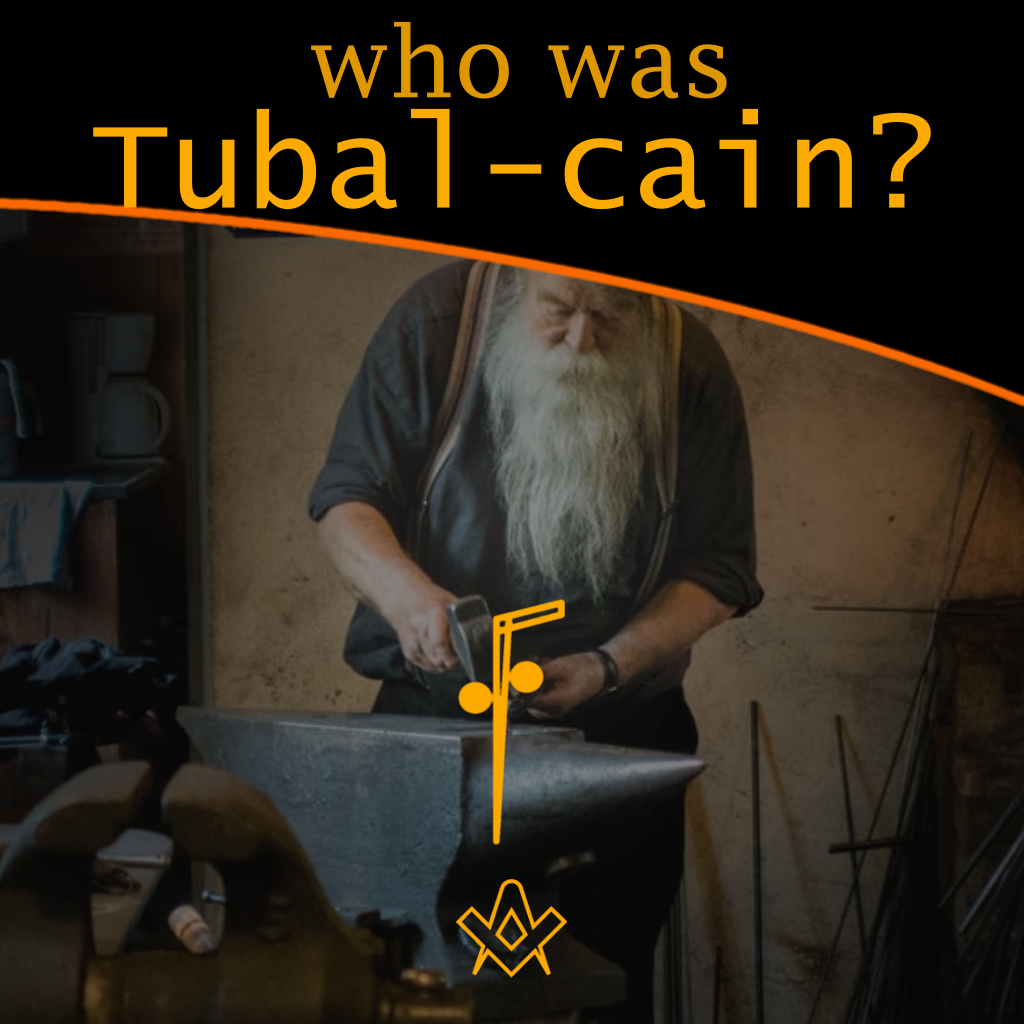Who was Tubal-cain?
Tubal-cain is a biblical figure; a smith, and master of metallurgy. He is a descendent of Cain, the son of Lamech and Zillah, and his three siblings are:
Jabel – in the Bible he is described as a shepherd, but according to the Cooke Manuscript he was reputed to have discovered geometry and became Cain’s Master Mason.
Jubal – the forefather of musicians, he is described as “the father of all those who play the harp and flute”.
Naamah – she is attributed to be a teacher of reading, and/or the inventor of weaving.
Tubal-Kaïn in zijn smidse; Geschiedenis van de familie van Kaïn / Over goede en slechte werkzaamheden; Boni et mali scientia
IMAGE LINKED: europeana.eu Attribution 4.0 International (CC BY 4.0)
In the Bible, Genesis 4:22 describes him variously as ‘an instructor of every artificer in bronze and iron’ (KJ21) or ‘a forger of all [cutting] instruments of bronze and iron’ (AMPC). The ERV states:
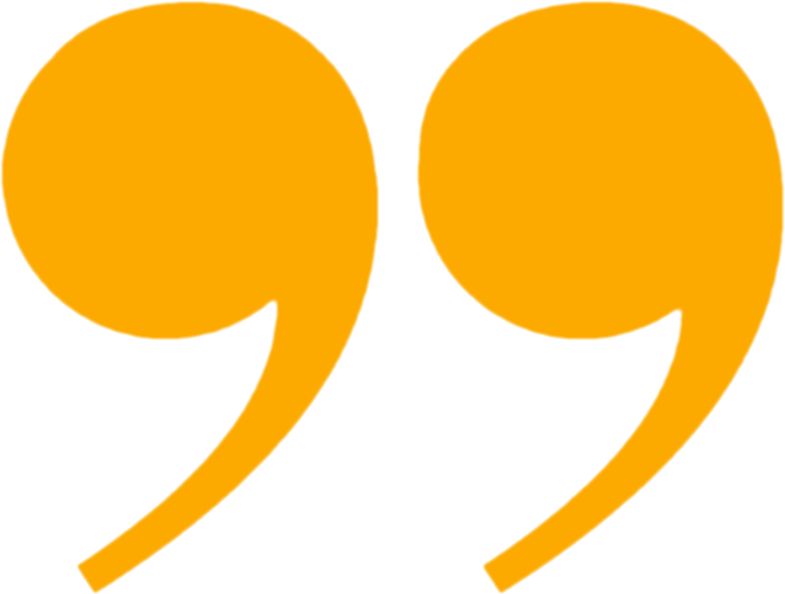
Tubal-cain was the father of people who work with bronze and iron.
Flavius Josephus, in his book Antiquities of the Jews stated that Tubal-cain “exceeded all men in strength, and was very expert and famous in martial performances”.
Tubal-cain and his family make their first Masonic-related appearance in the Matthew Cooke Manuscript (c.1450) the second oldest of the Masonic ‘Old Charges’, which recants the legend of the construction of two pillars, by the four children of Lamech i.e. Jabel, Jubel, Tubal, and Naamah.
Fearing the destruction of the world by fire or water, the siblings decided to inscribe all the sciences they had founded onto these pillars, one made of marble, which would not burn, and the other from clay-brick, which would not sink.
Ye shall understand
that this son Tubal Cain
was [the] founder of smiths’
craft, and of other crafts of
metal, that is to say, of iron,
of brass, of gold, and of silver,
as some doctors say, and his
sister Naamah was finder of
weavers-craft…
[Cooke MS – 239-247]
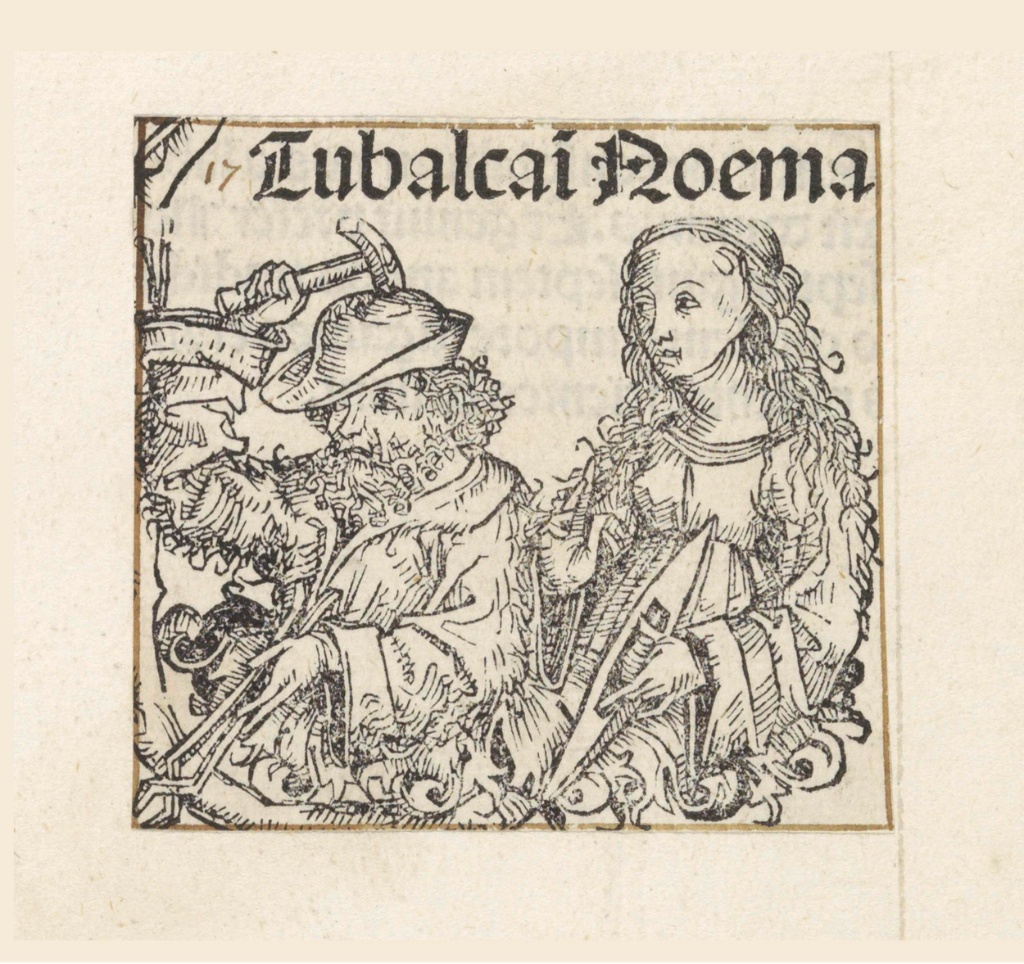
Tubal-cain and his sister Naamah – (nl) Tubal-Kaïn en zijn zuster Naäma; Tubalcai / Noema; Liber Chronicarum –
IMAGE LINKED: europeana.eu Attribution 4.0 International (CC BY 4.0)
…They took their counsel
together and, by all their witts,
they said that [there] were 2 manner of
stone[s] of such virtue that the one
would never burn, and that stone
is called marble, and that the other stone
that will not sink in water and
that stone is named latres, and
so they devised to write all
the sciences that they had found in
these 2 stones, [so that] if that God would
take vengeance, by fire, that the
marble should not burn.
And if God sent vengeance,
by water, that the other should not
Drown…
[Cooke Ms, 262-277] [1]
Importantly, James Anderson had access to the Cooke manuscript when he produced his 1723 Constitutions.
He quotes the final sixty lines in a footnote to his description of the York assembly.
The Woodford manuscript, which is a copy of the Cooke, has a note explaining that it was made in 1728 by the Grand Secretary of the Premier Grand Lodge of England, William Reid, for William Cowper, Clerk of the Parliaments, who had also been Grand Secretary. [2]
Notes:
[1] Translation of the Matthew Cooke MS from https://freemasonry.bcy.ca/texts/cooke.html
[2] Text Source: Wikipedia Creative Commons Attribution-ShareAlike License
The following is an excerpt from Harry Carr’s The Freemason at Work which gives us a concise answer as to why Tubal-cain is prominent in Masonic ritual:
Q. Why does Tubal-cain, an artificer in metals, play such a prominent part in our ritual? Why was not a builder chosen—or at least someone connected with the art of building?
A. For a full answer to this question, we have to go back to the oldest documents of the Craft, the MS. Constitutions, but first we should glance at the Biblical background to the story, which appears in Gen. 4, vv. 16-22.
The Bible tells how Cain, having murdered his brother, escaped from Eden to Nod where his wife bore him a son, Enoch.
Cain then built, or started to build, a city and knowing himself to be accursed, he named it after his son Enoch.
The succeeding verses then recount the birth of Enoch’s grandson, Lamech, with the story of Lamech’s two wives, and their four children:
Jabal, the father, or the originator, of the science of tending flocks. (Abel had been a shepherd, but Jabal had widened the class of animals that could be domesticated.)
Jubal, founder of the art of music.
Tubal-cain, inventor of the forge, skilled in brass and ironwork and in cutting instruments.
Naamah. The O.T. [Old Testament] text simply names her as Lamech’s daughter. But a Jewish tradition arose, and was well established among historians in the Middle Ages, that she was the inventor of the arts of weaving and other related skills.
So much for the background, amplified slightly with notes from the early commentaries.
The story, in so far as it concerns our present ritual, is derived from the earliest pillar legend incorporated in the historical portion of the MS. Constitutions, our Old Charges.
It tells how the four children of Lamech, fearing that the world was to be destroyed by fire or flood, ‘took counsel together’ and decided to inscribe ‘all the sciences’ that they had founded, upon two pillars, one of marble and the other of lacerus’ (clay-brick), because the one would not burn and the other would not sink in water.
There is no need to discuss the ‘accuracy’ of the legend. Josephus gave one version of it in his Antiquities, and the story reappears in the writings of many of the medieval historians.
The earliest ‘Masonic’ version appears in the Cooke MS. of c. 1410, where the compiler had clearly attempted to reconcile several conflicting accounts, but the Cooke MS. legend was repeated regularly (with variations) in all subsequent versions of the MS. Constitutions.
These two pillars, not Solomon’s, were the earliest pillars in the legendary history of the Craft and our story then goes on to recount how the world was saved in Noah’s flood and how the science of masonry traveled from the east through Egypt into Europe and was finally established in England.
Why was not a builder chosen? Doubtless because the first builder of a city, according to the O.T., was Cain, a murderer.
Why Tubal-cain? I would say, because he was the forerunner of Hiram Abiff; indeed the Old Testament (Gen. 4, v. 22, and I Kings 7, v. 14) uses precisely the same two Hebrew words in describing their craft, (choreish nechosheth) ‘a worker in brass’.
Tubal-cain was the founder of the craft in which Hiram Abiff, above all, excelled and he was the direct link between the two earliest pillars and those of Solomon’s Temple.
Although the name Tubal-cain appears regularly in all our Old Charges, it should be noted that the name did not come into our ritual until a comparatively late date, c. 1745; there is no printed evidence of that name in the Masonic ritual earlier than 1745, but recently discovered transcripts of evidence given to the Portuguese Inquisition authorities suggest that the name was in use in a Lodge of Irishmen at Lisbon as early as 1738. (AQC 84, p.93)
Excerpted from:
The Freemason At Work
Harry Carr & revised by Frederick Smyth
Lewis Masonic
1992
Further Reading
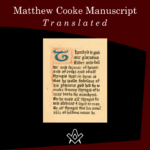
Cooke Manuscript
Matthew Cooke Manuscript was written c1450. A transcript of a yet older document, written by a Speculative Mason
more….

The Noachite Legend and the Craft
What is it to be a true Noachidae, and what is the Noachite Legend and the Craft ?
more….

The Freemason At Work
by Harry Carr & revised by Frederick Smyth
This is one of the most successful Masonic Publications in recent times due to the immense knowledge of the late Harry Carr and his entertaining writing style.
If you enjoy your masonry then this book will bring a new delight to all that you see and hear in lodge.
When Harry Carr became secretary and editor of the Quatuor Coronati Lodge of Research, the answering of lodge questions became a major part of his duties.
In a style that became a hall mark of all his masonic writing, he always answered a little more than the original question.
In response to hundreds of requests from all over the world, the answers he gave to questions during his twelve years office as editor of Quatuor Coronati Transactions have been collected together in this book.
Only the best and most interesting subjects are included and every question will be relevant to most brethren in the course of their work in the lodge ? hence the title The Freemason at Work
This book was substantially revised by Frederick Smyth, the eminent Masonic author and Past Master of Quatuor Coronati Lodge, in 1992; brining the text right up-to-date for much had change since the book was first published in 1976.
This is a book to be treasured, one that will provide a wealth of knowledge in an easy to read style.
A collection of more than 200 questions with comprehensive answers to all manner of masonic subjects.
Recent Articles: symbolism
 Legends and Symbols in Masonic Instruction Explore the significance of Masonic legends and symbols in this insightful post. Discover how Freemasonry imparts wisdom through allegorical narratives and emblematic imagery, revealing profound moral and philosophical lessons. Unveil the deep connections between Masonic teachings and the broader quest for understanding life’s fundamental questions. |
 Discover the mystical significance of the number 33. From its mathematical marvels and artistic influence in numerology to its esteemed place in Freemasonry, delve into the history and power of this master number. Explore why 33 holds such profound meaning in various spiritual and philosophical traditions. |
 The Practice of Freemasonry - P1 Embark on a transformative journey with Freemasonry, where the exploration of your Center unlocks the Perfect Ashlar within. Through the practices of Brotherly Love, Relief, Truth, and Cardinal Virtues, discover a path of enlightenment and self-improvement. Embrace the universal creed that binds us in the pursuit of our true essence. |
 Discover the fascinating history and significance of the Warrant of Constitution within Freemasonry. Unveil the evolution of this crucial authorization, its role in legitimizing Lodges, and its lasting impact on the global brotherhood of Freemasons. Explore the intricate link it provides between tradition and modern practice. |
 Freemasonry: Unravelling the Complexity of an Influential Organization Mysterious and captivating, Freemasonry has piqued the interest of seekers and skeptics alike. With its intricate blend of politics, esotericism, science, and religion, this enigmatic organization has left an indelible mark on society. Prepare to delve into the secrets of Freemasonry and unlock its hidden depths. |
 Unlocking the Mysteries of Freemasonry: In the hallowed halls of Freemasonry, a powerful symbol lies at the heart of ancient rituals and teachings—the Volume of the Sacred Law. This sacred book not only guides the spiritual and moral journey of Freemasons but also serves as a beacon of universal wisdom and enlightenment. |
 The Ancient Liberal Arts in Freemasonry Embark on a journey of self-improvement and wisdom with Freemasonry's guiding principles. Ascend the winding stairs of moral cultivation, analytical reasoning, and philosophical understanding. Embrace arithmetic's mystical properties and geometry's universal truths. Let the harmony of the universe inspire unity and growth. Discover the profound, hidden knowledge in Freemasonry's path to enlightenment. |
 Initiation rituals around the world are filled with fascinating elements and different images. One of them is that of darkness. When societies speak of darkness, they often mean a lack of knowledge, a lack of choice, or a symbol of evil. During initiation rituals, darkness is used to represent the initiate's lack of knowledge about the world, society, and initiation in general. It can also represent the initiate's inability to make a choice or endure a situation. Whether you have participated in an initiation rite or not, the meaning of darkness remains an intriguing concept worth exploring. Initiation rituals around the world are filled with fascinating elements and different images. One of them is that of darkness. When societies speak of darkness, they often mean a lack of knowledge, a lack of choice, or a symbol of evil. During initiation rituals, darkness is used to represent the initiate's lack of knowledge about the world, society, and initiation in general. It can also represent the initiate's inability to make a choice or endure a situation. Whether you have participated in an initiation rite or not, the meaning of darkness remains an intriguing concept worth exploring. |
 Masonic Deacon rods potentially trace their origins to Greek antiquity, symbolically linked to Hermes' caduceus. As Hermes bridged gods and mortals with messages, so do Masonic Deacons within the lodge, reinforcing their roles through ancient emblems. This connection underscores a profound narrative, weaving the fabric of Masonic rites with the threads of mythological heritage, suggesting the rods are not mere tools but bearers of deeper, sacred meanings that resonate with the guardianship and communicative essence of their divine counterpart, Hermes, reflecting a timeless lineage from myth to Masonic tradition. |
 The biblical pillars erected by Solomon at the Temple's porch, hold a profound place in history. These brass behemoths are not mere decorations; they are symbols of strength, establishment, and divine guidance. Explore their fascinating construction, dimensions, and the deep meanings they carry in both biblical and Masonic contexts. |
 Unlocking the Mind's Potential: Dive deep into ground breaking research revealing how simple daily habits can supercharge cognitive abilities. Discover the untapped power within and redefine your limits. Join us on this enlightening journey and transform your world! |
 Dive deep into the symbolic importance of the trowel in Masonry, representing unity and brotherly love. From its historical roots in operative masonry to its significance in speculative masonry, this article explores the trowel's multifaceted role. Discover its connection to the sword, the story of Nehemiah, and the Society of the Trowel in Renaissance Florence. Unravel the layers of meaning behind this enduring Masonic symbol. |
 Symbolism of The Builder's Jewel Batty Langley's "The Builder’s Jewel" (1741) is a visual masterpiece of Masonic symbolism, showcasing Langley's deep understanding of Freemasonry. The frontispiece highlights key symbols like the three pillars and the legend of Hiram Abiff, emphasizing Langley's dedication to Masonic traditions and teachings. |
 Unveil the mystique of the colour blue in Masonic symbolism. A hue evoking universal friendship and benevolence, its roots span ancient cultures, infusing Freemasonry's core values. This article explores blue's profound significance, guiding Freemasons towards wisdom and spiritual enlightenment. Discover the fascinating journey of this universal symbol. |
 Discover the intriguing world of the plumb in Masonic symbolism with our in-depth analysis. Uncover its rich history, moral teachings, and significance in Freemasonry, guiding members on their path to truth, integrity, and justice. Immerse yourself in the captivating power of this symbol that shapes lives within the brotherhood. |
 Unlock the mysteries of Freemasonry with 'The Key,' a profound Masonic symbol. This seemingly simple instrument holds a deeper meaning, teaching virtues of silence and integrity. Explore its ancient roots, from Sophocles to the mysteries of Isis, and discover how it symbolizes the opening of the heart for judgment. |
 Unlock the secrets of the Freemasonry with The Blazing Star - a symbol that holds immense significance in their rituals and practices. Delve into its history, meaning and role in the different degrees of Freemasonry with expert insights from the Encyclopedia of Freemasonry by Albert Mackey. Discover the mystique of The Blazing Star today! |
 There is no symbol more significant in its meaning, more versatile in its application, or more pervasive throughout the entire Freemasonry system than the triangle. Therefore, an examination of it cannot fail to be interesting to a Masonic student. Extract from Encyclopedia of Freemasonry by Albert Mackey |
 The Hiramic Legend and the Myth of Osiris Hiram Abiff, the chief architect of Solomon’s Temple, is a figure of great importance to Craft Freemasonry, as its legend serves as the foundation of the Third Degree or that of a Master Mason. He is the central figure of an allegory that has the role of teaching the Initiate valuable alchemical lessons. Although his legend is anchored in biblical times, it may have much older roots. |
 This rite of investiture, or the placing upon the aspirant some garment, as an indication of his appropriate preparation for the ceremonies in which he was about to engage, prevailed in all the ancient initiations. Extract from The Symbolism of Freemasonry by Albert G. Mackey |
 The All-Seeing Eye of God, also known as the Eye of Providence, is a representation of the divine providence in which the eye of God watches over humanity. It frequently portrays an eye that is enclosed in a triangle and surrounded by rays of light or splendour. |
 What's in a Word, Sign or Token? Why do Freemasons use passwords, signs, and tokens? As Freemasons we know and understand the passwords, signs and tokens (including grips), which are all used a mode of recognition between members of the fraternity. |
 A Temple of Living Stones: Examining the Concept of a Chain of Union What are the origins of the Chain of Union? And how did they come about ? The answers may surprise some members as W Brother Andrew Hammer investigates, author of Observing the Craft: The Pursuit of Excellence in Masonic Labour and Observance. |
 One of the best loved stories for the festive season is ‘A Christmas Carol’. A traditional ghost story for retelling around the fire on a cold Christmas Eve, it is a timeless classic beloved by those from all walks of life. Philippa explores the masonic allegory connections… |
 The Trowel - Working Tool of the Master Mason The Trowel is the symbol of that which has power to bind men together – the cement is brotherhood and fellowship. |
 Two Perpendicular Parallel Lines The point within a circle embordered by two perpendicular parallel lines, with the Holy Bible resting on the circle, is one of the most recognizable symbols in Freemasonry. It is also one which always raises a question. How can two lines be both perpendicular and parallel? |
 "The first great duty, not only of every lodge, but of every Mason, is to see that the landmarks of the Order shall never be impaired." — Albert Mackey (1856) |
 It is common knowledge that the ancient wages of a Fellowcraft Mason consisted of corn, wine, and oil. |
 “Do not come any closer,” God said. “Take off your sandals, for the place where you are standing is holy ground.” Exodus 3:5 |
 The Secret Language of the Stone Masons We know of Masons' Marks but lesser known are the 'argots' used by the artisans - in part 2 of a series on the social history of the Operative Masons we learn how the use of secret languages added to the mystery of the Guilds. |
 The phrase appears in the Regius Poem. It is customary in contemporary English to end prayers with a hearty “Amen,” a word meaning “So be it.” It is a Latin word derived from the Hebrew word - Short Talk Bulletin - Vol. V June, 1927, No.6 |
 Egypt's 'Place of Truth' - The First Operative Stone Masons' Guild? Was ancient Egypt's 'village of the artisans' the first operative stone masons' guild? And was their use of 'identity marks' a forerunner of the Mason's Marks of the cathedral builders of the Middle Ages? Read on for some possible answers… |
 The Pieces of Architecture and the Origin of Masonic Study Discover the journey of the Apprentice – from Operative to Speculative. This journey has been carried out since the times of operative Freemasonry but today the initiate works in the construction of his inner temple. |
 The Builders' Rites - laying the foundations operatively and speculatively The cornerstone (also ‘foundation’ or ‘setting’ stone) is the first stone to be set in the construction of the foundations of a building; every other stone is set in reference to this. |
 Applying the working tools to achieve our peculiar system of morality. |
 We take an in-depth look at the 47th Proposition of the 1st Book of Euclid as part of the jewel of the Past Master. |
 The Cable Tow: Its Origins, Symbolism, & Significance for Freemasons - Unbinding the significance of the cable tow. |
 We examine at one of the most impressive moments of the initiatory ceremony, a certain rite known as Circumambulation, and ask what is its meaning and purpose ? |
 So, what is the Level? And why do we use it in Freemasonry? |
 What is the mysterious pigpen or Masonic cipher that has been used for centuries to hide secrets and rituals? |
 The Story of the Royal Arch - The Mark Degree Extracted from William Harvey's 'The Story of the Royal Arch' - Part 1 describes the Mark Degree, including the Working Tools. |
 Ashlars - Rough, Smooth - Story of a Stone How we can apply the rough and smooth Ashlars with-in a masonic context |
 A detailed look at the Chamber of Reflection: A Revitalized and Misunderstood Masonic Practice. |
 Exploring the origin and symbolism of Faith, Hope and Charity |
 The Noachite Legend and the Craft What is it to be a true Noachidae, and what is the Noachite Legend and the Craft ? |
 In Masonic rituals, Jacob’s ladder is understood as a stairway, a passage from this world to the Heavens. |
 What is the meaning of the Acacia and where did it originate ? |
 What is the connection with the Feasts of St John and Freemasonry |
 The Forget-Me-Not and the Poppy - two symbols to remind us to 'never forget' those who died during the two World Wars. |
 Biblical history surrounding the two pillars that stood at the entrance to King Solomon's Temple |
 Is there a direct link between Judaism and Freemasonry? |
 The symbolism of the beehive in Masonry and its association with omphalos stones and the sacred feminine. |
 The Wages of an Entered Apprentice |
 An explanation of the North East corner charge which explores beyond one meaning Charity - |
 A brief look at the origins of the two headed eagle, probably the most ornamental and most ostentatious feature of the Supreme Council 33rd Degree Ancient and Accepted (Scottish ) Rite |
 A Muslim is reminded of his universal duties just as a Freemason. A Masonic Interpretation of the Quran's First Two Chapters |
 The three Latin words -{Listen, Observe, Be Silent}. A good moto for the wise freemason |
masonic knowledge
to be a better citizen of the world
share the square with two brothers

click image to open email app on mobile device
Tubal Cain
Masonic Apron NFT
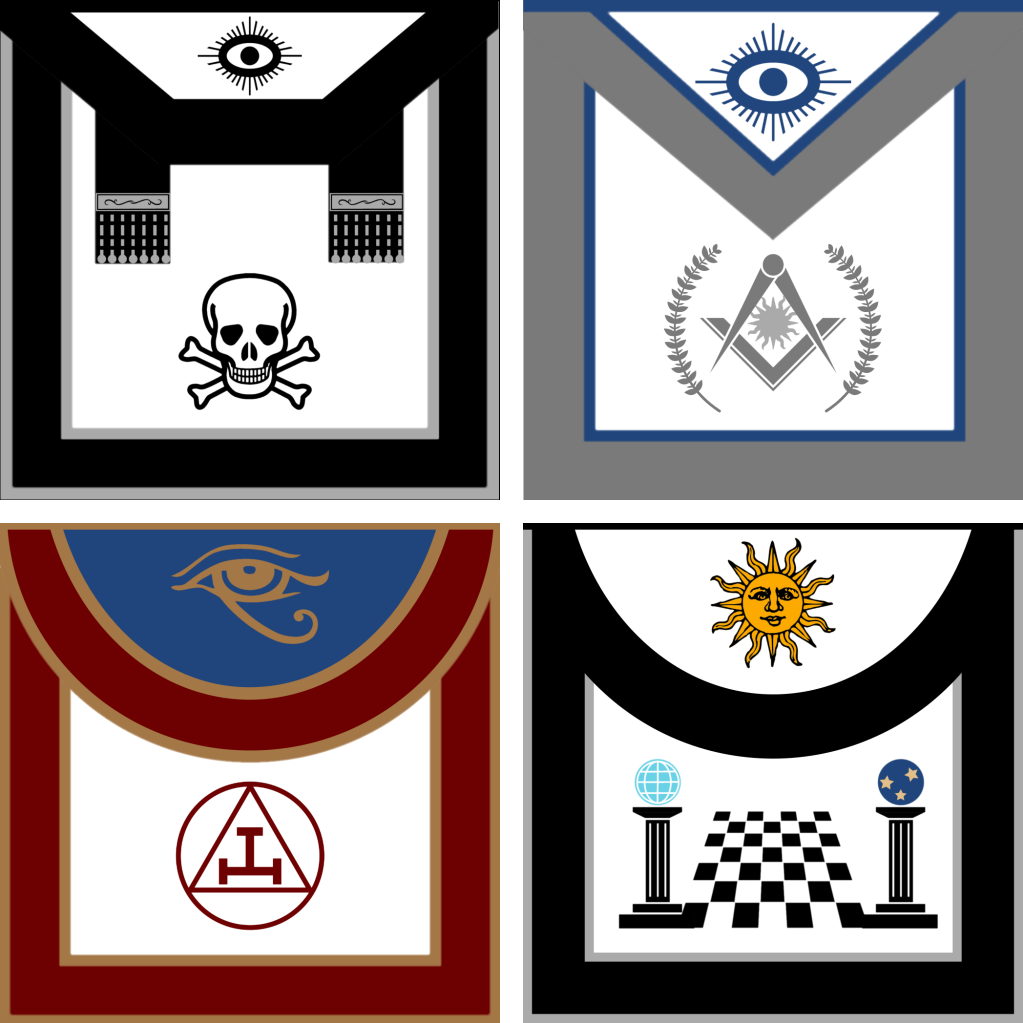


Each NFT includes the JPEG image plus a full size masonic apron and shipping worldwide
